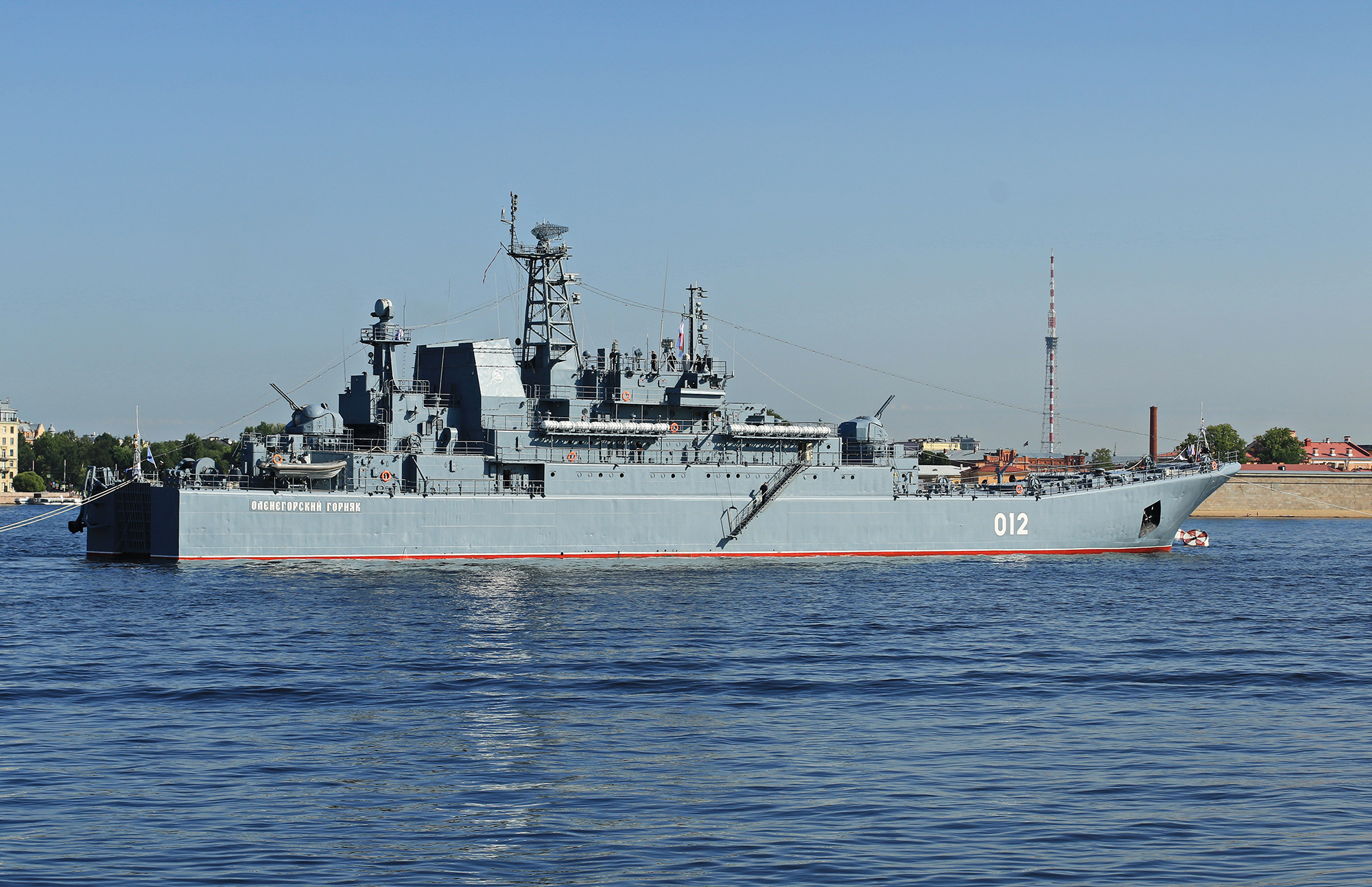How strikes on Russian logistics bring the liberation of Crimea closer
 Ukraine has recognized the strikes on the Crimean bridge and intends to lay down Russian logistics (Photo: Getty Images)
Ukraine has recognized the strikes on the Crimean bridge and intends to lay down Russian logistics (Photo: Getty Images)
With the intensified Ukrainian counteroffensive to the south, strikes on targets in Crimea and its approaches have become more frequent. Top officials' statements are raising hopes for the swift de-occupation of the peninsula. How strikes on Russian logistics contribute to the liberation of Crimea - read in the report by RBC-Ukraine.
At the beginning of July, President Volodymyr Zelenskyy reiterated that the war would not end until Crimea was liberated. He emphasized that the peninsula remains a priority target despite military efforts concentrated in the south and east.
"We cannot imagine Ukraine without Crimea. And while Crimea is under Russian occupation, it means only one thing: the war is not over yet," he said in an interview with CNN.
In recent weeks, events unfolded, ranging from strikes on the Crimean Bridge and military depots to hitting ships in the Black Sea. These incidents occur with notable regularity, and military intelligence promises further demilitarization of the peninsula, making the situation even more challenging for the occupiers. Crimea, which they use as a significant base for reinforcing their forces in southern Ukraine, will become increasingly untenable for them.
The occupation administration attempts to portray an image of control and a long-lasting presence. However, there are reports of the evacuation of local "officials," which suggests panic. Similarly, a year ago, a video of a Russian woman expressing how she felt at home on the peninsula went viral.
According to Natalia Humeniuk, the head of the United Coordinating Press Center of Security and Defense Forces of the South of Ukraine, the occupiers and collaborators are preparing for a gesture of goodwill. They employ fire control over the land corridor and strikes on the Crimean Bridge, using military and civilian individuals in a "human sandwich" tactic.
"... this is when civilian cars are inserted into military columns to create a living shield. People in this situation are not very willing to risk their lives," she emphasized.

Chief of the Defense Intelligence of Ukraine, Kyrylo Budanov, once again predicts the imminent liberation of Crimea (Photo: RBC-Ukraine, Vitalii Nosach).
Increasingly often, there are discussions in the public sphere about the possible Ukrainian Armed Forces' operation on the peninsula in the coming months. The timelines keep shifting, but the Chief of the Defense Intelligence of Ukraine, Kyrylo Budanov, is confident that the liberation of Crimea is not far off.
The Crimean Bridge may "wear down," but under certain conditions
The strength of the Crimean Bridge has been under scrutiny since last year. The first attempt dates back to October 8, 2022, when two halves of the automobile section collapsed due to a powerful explosion, damaging railway tracks as well.
The Ukrainian side did not confirm involvement but considered it a legitimate military target. In August, the advisor to the Head of the Office of the President of Ukraine, Mykhailo Podolyak, stated that the bridge should be destroyed, and the Armed Forces warned that it could become a priority target once Ukraine acquires the necessary weaponry.
Then, near the Taman Peninsula, a truck exploded close to the automobile section, damaging communications. The restoration took place until May 2023. On the 500th day of the Russian invasion, Deputy Minister of Defense Hanna Maliar acknowledged it was a Ukrainian strike. In July, the head of the Security Service of Ukraine (SBU), Vasyl Maliuk, referred to it as an operation by Ukrainian special services.
Within nine months, the Crimean Bridge was hit again. On the night of July 17, two explosions occurred near the 145th pylon. As a result, one section of the automobile passage collapsed, and railway tracks were damaged. According to sources of RBC-Ukraine, the SBU and Naval Forces carried out the attack using surface drones.
Following this, President Volodymyr Zelenskyy reminded that the bridge between the occupied peninsula and mainland Russia facilitates the enemy's troop movement. Therefore, it is a legitimate military target that needs to be neutralized.
Military expert Vladyslav Seleznov emphasizes that the Crimean Bridge provides a crucial logistic route for the adversary, and its destruction is a matter of time.
"It ensures supplies for the occupant groups south of the Kherson and Zaporizhzhia regions. Once the Russians lose this route, they immediately feel shortages, from food to ammunition. Moreover, their ability to evacuate wounded rapidly will be limited," he noted in a comment to RBC-Ukraine.
Regarding when the Crimean Bridge will eventually "wear down," it depends on when a strike can be carried out to cause maximum destruction.
"I've heard the opinion that to make it all work, and you must strike almost with tactical nuclear weapons. However, that's not entirely productive. Why? Well, considering the significant damage caused by the two previous explosions, the equivalent is much less than nuclear weapons. I believe everything will work out immediately as soon as we can strike with ATACMS missiles. Without them, we'll first have to reach the Azov Sea coast. In this case, it's possible that to disrupt logistics through the Crimean Bridge, HIMARS combat capabilities might suffice," the expert added.
Strikes on the Chongar Bridges have become systematic
Equally important is the destruction of the bridges connecting Crimea and mainland Ukraine. For instance, several strikes were launched on the vital arteries in the Chongar area as part of the summer counteroffensive.
The first strike occurred on June 22. The damage to the automobile bridge across the Syvash increased the delivery route by approximately three times – around 150 kilometers – due to the necessity to redirect cargo through Armiansk. About 70% of the military traffic from Crimea went through this bridge, and the occupiers had to construct a pontoon crossing.
According to the statement of the General Staff of the Ukrainian Armed Forces, the bridge was targeted with Storm Shadow aviation missiles with a range of impact exceeding 250 kilometers. The main objective was to disrupt the supply of Russian forces with ammunition and other equipment.
The second strike on July 29 targeted a railway bridge. The occupation administration claimed to have neutralized 12 rockets, but soon photos emerged showing the destroyed railway tracks. The third attack on August 6, besides the newly repaired Chongar Bridge, also affected the crossing from the Arabat Spit to Henichesk.

Consequences of the third strike on the Chongar Bridge (Photo: rossmedia)
The head of the Center for Military-Legal Research, Oleksandr Musiyenko, emphasizes that the Ukrainian Armed Forces are actively working to disrupt enemy logistics. If the Chongar bridges are put out of commission, the Russians are forced to rely more heavily on the route through Perekop.
"And we can see that they are facing a serious problem with logistics and timely delivery of ammunition. The increased distance means that delivery takes more time. At the same time, currently, Crimea is not completely cut off – transportation is still ongoing. With difficulties and reduced volumes, but it's still moving," he stated in an interview with the publication.
On the other hand, destroying the Chongar bridges will likely complicate future Ukrainian Armed Forces advances into Crimea. However, most likely, they were destroyed by the Russians during their retreat, as was the case in the Kherson region when at least two roads and two railway routes across the Dnipro were blown up.
Southern approaches are under fire control. But not 100%.
In parallel with attempts to breach the first line of defense in the south, the Ukrainian Armed Forces are exerting firepower on Russian rearward nodes. Strikes on their bases in Tokmak, Melitopol, and Berdyansk in the Zaporizhzhia region have become more frequent.
In a recent incident, explosions occurred at an ammunition depot in Tokmak. Last week, the advisor to the mayor of Mariupol, Petro Andriushchenko, reported that "something flew in there," followed by a loud detonation.
Continuous strikes were carried out against the Russians in Berdyansk. The exact nature of these strikes is unknown, but it was reported that the enemy's air defense attempted to neutralize the threat. According to the "ATESH" partisan group, the attack targeted the location of the occupiers' personnel. Additionally, last week, explosions were reported in Melitopol, where the Russians had established their command center.
As evidence that the Ukrainian Armed Forces maintain control over logistics in the south, Russian propagandists recently presented a story about an armored train that runs between Melitopol and Volnovakha (Donetsk region). This train accompanies ammunition convoys or independently transports supplies to the frontline troops.
During one of its trips, the train came under "attack by rocket projectiles." Judging by the distance from the front line, at least several sections of the railway are within range of M142 HIMARS and M270 systems with a firing range of about 80 kilometers. However, it shouldn't be ruled out that other long-range plans could also be used.
"Our forces are doing everything possible to diminish the enemy's combat potential. I wouldn't say the Ukrainian south is under 100% fire control today, but this effort is ongoing. And we see certain successes. The main goal is to disrupt logistics through Melitopol, Tokmak, Berdyansk, and even Mariupol, where military cargo arrives from Russia. We're doing everything to limit the enemy's defensive capabilities. Undoubtedly, this aids our counteroffensive. It exhausts the enemy, and I believe we will soon see the results of our work," Musiyenko believes.
Expert Vladyslav Seleznov points out that the critical task in the south right now is not just about gaining square kilometers but about destroying the potential of the occupying army by striking at depots, armored vehicles, artillery weaponry, and logistic routes. And evidently, the strikes in the Tokmak, Vasilyivka, and Melitopol regions will continue, as these areas host the main Russian targets.
For now, the complete disruption of Russian logistics has not been achieved. However, the Ukrainian Armed Forces may manage to advance further on specific fronts, which will accelerate the resolution of this issue.
Explosions at depots – echoes of the advance in the south
The past few weeks have been "fruitful," not only regarding strikes on targets in Crimea. For example, on July 19, a depot with ammunition near Stary Krym (Kirovsky district) burned for over a day and exploded.
Among the versions put forth by the occupiers were drone attacks, Storm Shadow cruise missiles, and the use of the Grom-2 operational-tactical complex. The exact cause of the depot's destruction remains unknown, as the Ukrainian side refrains from providing detailed comments, unlike the cases involving strikes on targets on the mainland south.
In any case, the attacks continued: on July 22, a depot near the town of Oktyabrskoye, about 40 kilometers from Simferopol, exploded; on the 26th, there was a strike on a depot near Yevpatoriya, and on the same day, due to a hit on a repair battalion, several Russian soldiers were wounded.
From the latest events – an attack on an oil depot in Feodosia. On the night of August 4, the city experienced a blackout, but, as Telegram channels claim, there was no fire at the oil depot after the explosions. Natalia Humeniuk, the spokesperson for the Defense Forces of the South of Ukraine, limited her comments to the fact that such explosions could repeat since fuel supply to the enemy forces is a crucial component of their combat readiness.
According to Seleznov, the events on the peninsula fit into the strategy that the Ukrainian military is implementing in the south.
"At least two large depots were destroyed, including one at the Oktyabrskoye airfield in the Krasnogvardeyskiy district. A base considered intermediate was destroyed, and vehicles transported ammunition from there. There was a precise hit on that base, and consequently, those munitions will never reach our soldiers," he told the publication.
Russian dominance in the Black Sea will be turned upside down
The past week was significant for several reasons. Firstly, the port and naval base in Novorossiysk on the Black Sea, previously considered a rear area for the Russians, was attacked.
The maritime drones covered a distance of no less than 700 kilometers, hitting the large landing ship "Olenegorsky Gornyak." It suffered damage to its port side, but since the ship was not in the open sea, it was successfully towed to the dock. Whether the Russians can restore it to operational status is a big question. At least, the Ukrainian Navy has severe doubts about that.
The ship was used to provide, among other things, the delivery of military cargo to the occupied Crimea.

The large amphibious assault ship 'Olenegorsky Gornyak' is unlikely to return to sea anytime soon (Photo: wikimedia org)
Secondly, a naval drone sank the Russian tanker Sig following the attack on the "Olenegorsky Gornyak" in Ukraine's territorial waters south of the Kerch Strait. Our sources reported that this was another SBU and the Ukrainian Navy operation. This was also confirmed by the head of the SBU, Vasyl Maliuk, who talked about the legality of attacks on Russian ships in Ukrainian waters.
Moreover, these drone strikes showcase their superiority over anti-ship missiles. In the case of the tanker, the hit precisely targeted the engine compartment, resulting in the power plant being disabled without fuel spillage. With a missile, the seeker head would have chosen the most significant target on the water, and precision targeting wouldn't have been possible.
As a result, after these drone attacks, the Russian fleet has to maneuver frantically in the sea, and the ships have been concentrated in an area previously considered safe for them.
According to Seleznev, creating a Ukrainian fleet of strike drones will ultimately overturn Russia's maritime dominance.
"We will have the resources to hit enemy ships in any part of the Black Sea waters. There won't be any safe place for the Russians. Drones can even overcome buoy barriers at the entrance to Sevastopol Bay.
This process will continue," he said in a comment to RBC-Ukraine.
The expert also points out that Ukraine is asserting its rights to ensure safe navigation through these strikes. Initially, a combat ship was targeted, followed by a tanker.
"Regardless of whether it was transporting fuel for the army in Crimea or Syria, Ukraine has shown the world that it has at least a plan to combat the enemy fleet. While NATO countries like Romania, Bulgaria, and Turkey are contemplating how to respond to Russia's attempts to turn the Black Sea into its internal waters, Ukraine is working to confine Russian ships to the bays," he added.
Oleksandr Musiyenko doesn't rule out that the following targets could be missile carriers.
"Any ships that supply the enemy army with fuel, weapons, and all the necessary equipment are legitimate military targets for us," he noted.
According to him, through these attacks, Ukraine intends to create significant problems for the Russians at sea, particularly regarding logistics. And with a high probability, Ukrainian surface drones can achieve this task.

